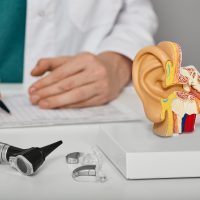As we age, it’s common to experience joint pain and discomfort. Joint pain can significantly impact our quality of life, limiting our mobility and hindering daily activities. However, there are several preventive measures and treatment options available to manage and alleviate joint pain in older adults. In this article, we will explore effective strategies for preventing and treating joint pain to promote a healthier and more active lifestyle.
Maintain a Healthy Weight: One of the most important steps in preventing and managing joint pain is maintaining a healthy weight. Excess weight puts added stress on the joints, especially in weight-bearing areas such as the knees and hips. Losing even a small amount of weight can significantly reduce the pressure on the joints, relieving pain and improving mobility.
Stay Active and Exercise Regularly: Regular exercise is crucial for joint health and can help prevent joint pain. Engaging in low-impact exercises, such as walking, swimming, or cycling, can help strengthen the muscles surrounding the joints, improve flexibility, and reduce joint stiffness. Consult with a healthcare professional or physical therapist to develop an exercise program tailored to your needs and abilities.
Practice Proper Body Mechanics: Pay attention to your body mechanics and maintain proper posture and body alignment when performing daily activities. Avoid repetitive movements or overloading the joints, as these can contribute to joint pain. Use ergonomic tools and assistive devices when necessary to reduce strain on the joints.
Protect Your Joints: Take precautions to protect your joints from injury. When engaging in physical activities or sports, use appropriate protective gear, such as knee pads or wrist guards. Use proper lifting techniques when lifting heavy objects to avoid excessive stress on the joints.
Maintain a Healthy Diet: A balanced and nutritious diet can support joint health. Include foods rich in omega-3 fatty acids, such as fatty fish, walnuts, and flaxseeds, which have anti-inflammatory properties. Incorporate plenty of fruits, vegetables, whole grains, and lean proteins to provide essential nutrients for joint health.
Manage Chronic Conditions: Chronic conditions like arthritis can contribute to joint pain. Follow the treatment plan recommended by your healthcare provider, take prescribed medications as directed, and attend regular check-ups. Managing chronic conditions effectively can help minimize joint pain and prevent further joint damage.
Apply Heat or Cold Therapy: Applying heat or cold therapy to the affected joints can help alleviate joint pain. Heat therapy, such as warm compresses or heating pads, can relax muscles and improve blood circulation. Cold therapy, using ice packs or cold compresses, can help reduce inflammation and numb the area.
Consider Physical Therapy: Physical therapy can be highly beneficial for older adults experiencing joint pain. A physical therapist can design a personalized treatment plan that includes exercises, stretches, and manual therapies to improve joint mobility, reduce pain, and enhance overall function.
Explore Alternative Therapies: Some older adults find relief from joint pain through alternative therapies such as acupuncture, massage, or chiropractic care. Consult with a qualified practitioner to determine if these therapies are suitable for your condition.
Use Over-the-Counter or Prescription Medications: Over-the-counter pain relievers, such as acetaminophen or nonsteroidal anti-inflammatory drugs (NSAIDs), can help manage mild to moderate joint pain. For severe or persistent joint pain, consult with a healthcare professional who may prescribe stronger medications or recommend injections to provide relief.
In conclusion, joint pain is a common issue among older adults, but it doesn’t have to be a barrier to an active and fulfilling life. By following these preventive measures and seeking appropriate treatment options, you can effectively manage joint pain and maintain joint health. Remember to consult with a healthcare professional to determine the best course of action for your specific needs.












